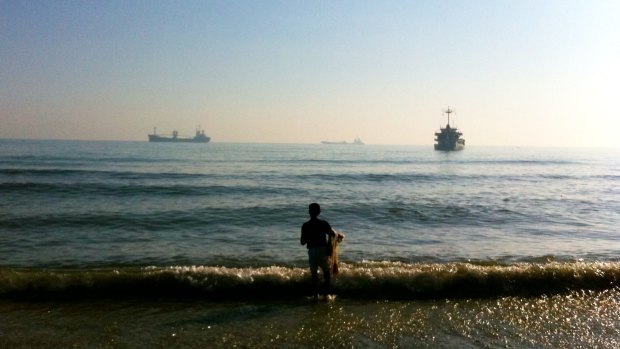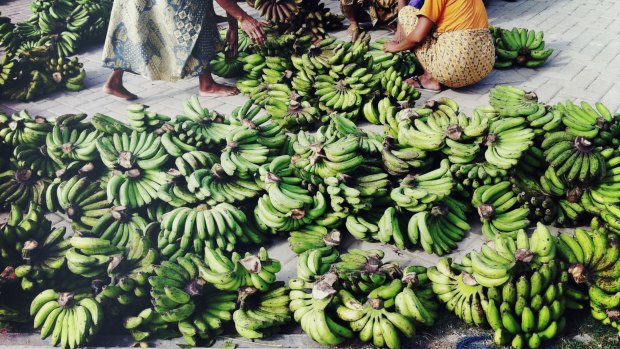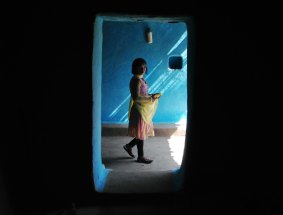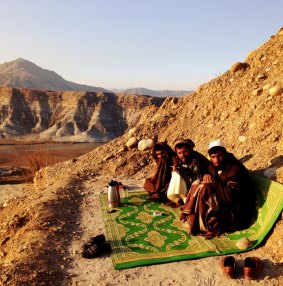This was published 8 years ago
How to take great travel photos with your phone
By Andrea Black

Dili Beach, East Timor.Credit: Misho Baranovic
Unpack your cumbersome cameras and heavy lenses; rapidly changing technology is enabling anyone with a smartphone to capture evocative travel images and disseminate them immediately via social media.
"The latest generation of phones allow almost complete control over how you capture the image," says Melbourne-based mobile photographer Misho Baranovic.
"There are endless possibilities for editing photographs and then finding a community online for whatever social platform you want to choose that will inspire you and support you in your pursuit of photography."

At the Dili markets, East Timor.Credit: Misho Baranovic
Baranovic was an early adopter. He has written a book on how to take images with a smartphone, called Take Creative Control of Your iPhone ("It's out of print now, we're doing a refresh; the technology moves quickly") and he first showcased his mobile photography at an exhibition in Melbourne in 2011.
"The best thing about using a smartphone is that it's a small device where you can do all things at all times; you can shoot and share," he says.
Baranovic has shot all over, but his favourite destination to photograph has been the extraordinarily diverse landscapes of East Timor.

A village house in Chhattisgarh, India.Credit: Misho Baranovic
It's not just iPhones: there's the new Samsung Galaxy S6 with a "double tap" feature that launches the camera in under a second, as well as the Nokia Lumia, Sony Xperia and HTC One M8, which all have superior cameras.
"You can get similar results on different mobiles," says Baranovic. "I've just gone down the iPhone path."
Baranovic is heavily involved in the Head On Festival, which added the mobile category last year. This year he co-curated the Head On 10 x10 iPhone Photography exhibition at the Apple Store, which showcased storytelling through mobile media.

Not a bad spot to watch the sun set with the fellas and a thermos full of tea. The Jalalabad Road, Afghanistan. Credit: Andrew Quilty
He recommends travel photographers download apps to augment images before heading off on a journey.
"You want as much control as possible over the way you capture a picture, so the main app I would use is ProCamera 8, which is a really strong and dedicated shooting app; it gives you full control over your settings, exposure, ISO and shutter – and in that same vein there's other apps like Camera+ and VSCO that have manual capabilities," he says.
He recommends editing apps Snapseed ("like a mini-Photoshop") and a new app called Enlight.
For Australian photojournalist Andrew Quilty, who is based in Afghanistan, there's an added reason to use a smartphone to photograph.
"The ubiquity of the smartphone, as opposed to DSLRs, means people that might end up in your pictures are more likely to be familiar with smartphones," he says. "Most people are less afraid of what they know."
He uses the iPhone 6 to capture the shots he posts to Instagram, as well as an app called 645 Pro.
"645 Pro allows a lot more personalisation, control and functionality than others I've used," says Quilty, who was named 2014 Nikon Walkley Photographer of the Year.
When capturing travel imagery, Quilty believes the same principles apply with smartphones as they do with more traditional cameras.
"Getting the exposure right in the first place is important, because most images taken on smartphones are also viewed on smartphones [on smaller monitors than we were previously used to], so it often pays to simplify the composition," he says.
Whatever the device used, most travel photographers these days will showcase their work on social media.
"I'm primarily an Instagrammer," says Baranovic.
"We started early days on Flickr and Tumblr, but I think the majority of my sharing is on Instagram because of the immediacy and simplicity of the platform, and because there's so many people on there sharing so much work that you could explore sub-interests you have in photography."
Quilty's Instagram account is made up of incredible images taken on his phone, and he is a fan of the app's editing capabilities.
"Even if you don't want to upload pictures to Instagram, you can always switch the phone to flight mode, edit and press send, which will save the edited image back to your camera roll," he says.
Dedicated smartphone travel photographers might want to look into the different attachments available, including the Olloclip, which makes three glass-lens systems that slip onto the top of the iPhone 6, and a new lens called Moment.
"I've heard good things about Moment; it's very high-end in terms of quality," says Baranovic of the case that attaches to your iPhone 6 and has a real shutter button, just like an old-school camera.
"For travelling, my top advice would be to take a battery pack - whether that's part of the case that you buy or an external charger; it's hugely valuable when you're out on the field."
TIPS TO TAKE BETTER SMARTPHONE TRAVEL SHOTS
TAKE YOUR SHOTS IN THE LATE AFTERNOON
"The best light is the golden hour, when the sun is starting to set, and you've got warmer tones and nice orangey gold colour that makes everything look a bit nicer on the mobile," says Baranovic.
BE INCONSPICUOUS AND POLITE
"If shooting street photography, don't interrupt the scene," says Baranovic. "But if you are capturing photographs of people up close, always ask for permission; it's also a good way of getting comfortable talking to people in a destination."
DO YOUR OWN EDITING, DON'T USE STYLISED FILTERS
"I think most people have moved on from them already, but I would always encourage people to avoid using stylised filters," says Andrew Quilty. "Not only do they give individual's pictures a generic look, I think they'll quickly date; find your own style and avoid what's 'fashionable'."
LEAVE THE SELFIE STICK AT HOME
Baranovic recommends carrying a mini tripod, such as the GorillaPod, which has bendable legs and rubber grips, and is good for long exposures. Don't expect to see him shooting with a selfie stick. "I'm not hugely a fan of the selfie stick," he laughs.
TAKE INSPIRATION FROM INSTAGRAM
Some of Misho Baranovic's (@mishobaranovic) favourites include: @kirstenalana; @miaglastonbury; @andrewquilty; @theodorekaye
Andrew Quilty likes: @dguttenfelder; @mattblack_blackmatt; @fisheyedreams; @emencher; @matteich; @sachalecca
Sign up for the Traveller newsletter
The latest travel news, tips and inspiration delivered to your inbox. Sign up now.